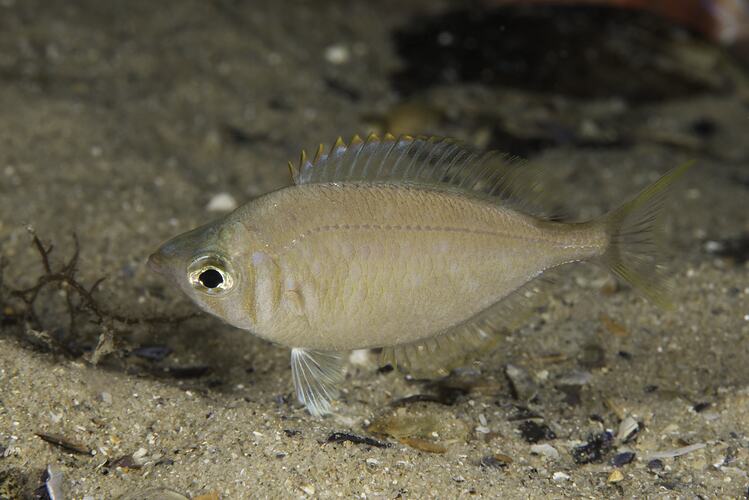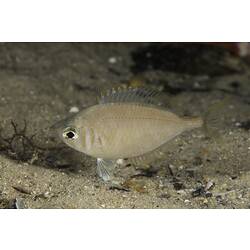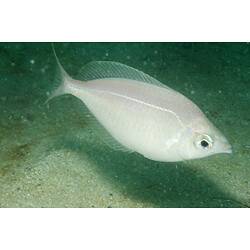General Description
Body deep, compressed, forehead convex, snout pointed with protrusible jaws; dorsal and anal fins long based, low at front, progressively becoming taller; tail base slender, caudal fin slightly forked. Silvery, darker above, scales with blue and yellow on lower scales, dorsal fin with a yellow margin. Usually 10 cm long head to tail tip (up to 21 cm).
Biology
The Silverbelly is a schooling species found in near rocky reefs and seagrass beds in bays, and coastal areas. The Silverbelly uses its protrusible mouth to poke around for invertebrates on sandy and muddy bottoms.
Distribution
Southern Australia.
Habitat
Sandy and muddy areas in coastal waters and bays, often near seagrass.
More Information
-
Animal Type
-
Animal SubType
-
Brief Id
Body deep, compressed, silvery, forehead convex, snout pointed, jaws protrusible.
-
Habitats
-
Diet
Carnivore
-
Diet Categories
Invertebrates
-
Endemicity
-
Commercial
Yes
-
Conservation Statuses
CITES: Not listed, FFG Threatened List: Not listed, DSE Advisory List: Not listed, IUCN Red List: Not listed
-
Depths
Deep ( > 30 m)
-
Water Column Locations
On or near seafloor
-
Taxon Name
-
Scientific Author
Castelnau, 1872
-
Common Name
Silverbelly
-
Kingdom
-
Phylum
-
Subphylum
-
Superclass
-
Class
-
Order
-
Family
-
Genus
-
Species Name
melbournensis



